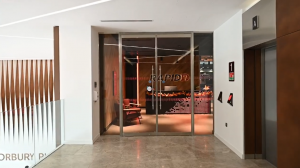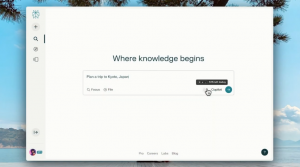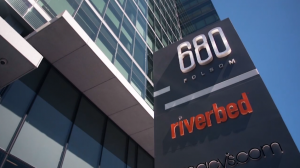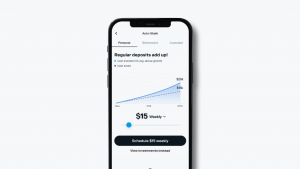Printing Photos in 3D & A Venti Printuccino – SiliconANGLE News Roundup
 Like A Puz-3D…Remember Those?
Like A Puz-3D…Remember Those?
The minds at Disney Research labs in Zurich have developed a new program that can use 2D photos to build 3D models.
By combining hundreds of images through a specifically-designed algorithm, the program is able to create 3D models of complex, real-life scenes for use in movies and games, or to be printed as high-resolution 3D models.
The challenge for the team at Disney was to develop an algorithm that can leverage huge amounts of modeling data, but process it all without the need to keep everything on memory at a given time. The researchers demonstrated their method by photographing one-hundred twenty-one-megapixel images to create a 3D scene.
Most existing stereo reconstruction techniques have been tailored for resolutions of just 1 or 2 megapixels, so this is a huge advancement for the industry.
Sprint To A New Business Model
Sprint just announced their second quarter financials, where the company posted its highest ever earnings of $7.2 billion, a full eight percent more than last year’s.
Despite the increase in earnings, various investments in infrastructure have caused the company to take a net loss of one-point-six-billion dollars for the quarter.
Thanks to these investments, Sprint now has full 4G-LTE coverage in one-hundred-and-fifty-one markets, including forty-one newly announced areas, like Philadelphia, Brooklyn, and Nashville. The report revealed some interesting facts. Almost ninety-percent of the carrier’s postpaid handset sales were smartphones, including about one-and-a-half million iPhones sold during the quarter.
Going forward, the company is looking to embrace a slew of new data plans, including plans that offer guaranteed unlimited data for life to new customers.
Chinese Invade America!
![]() While current smartphone efforts for company Asus are overseas, in countries where the company already has strong relationships with retailers and carriers; the Taiwanese device maker is now preparing to shift its attention to the US, where it’s likely to release a smartphone as early as 2014.
While current smartphone efforts for company Asus are overseas, in countries where the company already has strong relationships with retailers and carriers; the Taiwanese device maker is now preparing to shift its attention to the US, where it’s likely to release a smartphone as early as 2014.
Asus has become known for its hybrid devices. Their Padfone, for example, is a large tablet with the functionality of a phone. The company also recently introduced the Transformer Book Trio, which combines both Windows and Android and blends a tablet, laptop and desktop into one package.
Chairman Jonney Shih hinted at the future of his company with hybrid devices, saying, “I think we are going to have something even more revolutionary for this series.”
Finnish In Close Proximity
Nokia is preparing to launch a new proximity sensor accessory for its line of Lumia Windows Phones.
Sources close to the company have revealed that the Finnish smartphone maker will debut a new Treasure Tag accessory that combines Bluetooth 4.0 and NFC to track various items. The new device will come with a loop strap that can be used to attach it to a set of car keys.
Users will be able to track the tag using a special app, which displays the location of the sensor on a map. You can also do a reverse lookup to locate lost phones that are paired with the Treasure Tag by simply holding down a key.
The Treasure Tag is designed to be always on and includes a battery that should last for about six months. For those without a Windows phone, a recently funded Kickstarter project called Tile offers a similar solution for iOS devices.
Yahoo Pays Exec To Stop Working
![]() According to an internal memo, David Dibble, Yahoo’s senior vice president of technology and operations, will be stepping down from his position and officially leaving the company.
According to an internal memo, David Dibble, Yahoo’s senior vice president of technology and operations, will be stepping down from his position and officially leaving the company.
Though he’s the second top manager to leave Yahoo in recent weeks, the company reported that Dibble would continue to work as an unspecified consultant, unlike Mickie Rosen, who left his position as Yahoo’s head of media last week.
Regulatory filing papers indicate that the former VP will continue to collect his annual base salary of six-hundred-and-fifty-thousand dollars and he’ll also receive a ninety-percent annual bonus opportunity for his new advisory role, not a bad parting deal!
Not The Kind of Spoof I Like…
In networking, “spoofing” is the act of faking data to take advantage of network insecurity, and as a team of University of Texas students have shown, it’s now possible to take control of a yacht.
The students managed the feat by creating a device that sent false GPS signals to the ship. From there, the student’s transmission overrode the existing GPS signals, and gained control of the eighty-million dollar yacht’s navigation system.
The scientists who conducted the experiment — done with permission of the yacht’s owners — say their ability to broadcast counterfeit GPS signals that triggered no alarms within the ship’s navigation system highlights a serious flaw in transportation networks on land and sea.
According to a study, about ninety percent of the world’s freight moves by sea, and all this experiment proves that other semi-autonomous vehicles, such as aircraft, are likely similarly vulnerable. I guess this gives new meaning to the term “cast-a-way”.
Google Glass – College Edition(TM)
![]() Google is enlisting the help of film students from five different colleges to help explore how its famous wearable computing devices can be used to make movies.
Google is enlisting the help of film students from five different colleges to help explore how its famous wearable computing devices can be used to make movies.
As part of the experiment, Google will hand out three pairs of Google Glass to each of the five participating schools: The American Film Institute, California Institute of the Arts, Rhode Island School of Design, the University of California, and the University of Southern California.
Google says the schools will explore how to use Glass for documentary filmmaking, character development, location-based storytelling and “things we haven’t yet considered.” Norman Hollyn, a professor at the USC School of Cinematic Arts, spoke about the experiment, saying “We’re kind of looking at it as, ‘How can we push this to tell stories rather than just sit on a cool Disneyland ride and broadcast that out to people?”
This seems to be exactly the kind of question Google had hoped they would be asking, and attempting to answer.
YOU CALL ME A DECAF?!
In a unique approach to 3D printing, a Taiwanese coffee mart called Let’s Cafe has created a special coffee machine that allows users to print pictures of themselves directly onto the foam of their latte.
After taking a photo with their phone, customers can upload the image directly to the coffee machine. The machine prints the customer’s photo directly onto their coffee. There’s no need to be afraid of getting ink in your mouth, either.
The machine actually uses cocoa powder to create its caffeinated caricatures. Now you have one more description to add to your venti, non-fat, soy, three pumps of hazelnut latte.
And that’s all the news we had for today. For these stories and more, you can join us every weekday morning at 8:30 am Central on NewsDesk with Kristin Feledy.
photo credit: post-apocalyptic research institute via photopin cc
photo credit: oomlout via photopin cc
photo credit: Thomas Hawk via photopin cc
photo credit: Thomas Hawk via photopin cc
A message from John Furrier, co-founder of SiliconANGLE:
Your vote of support is important to us and it helps us keep the content FREE.
One click below supports our mission to provide free, deep, and relevant content.
Join our community on YouTube
Join the community that includes more than 15,000 #CubeAlumni experts, including Amazon.com CEO Andy Jassy, Dell Technologies founder and CEO Michael Dell, Intel CEO Pat Gelsinger, and many more luminaries and experts.
THANK YOU

















